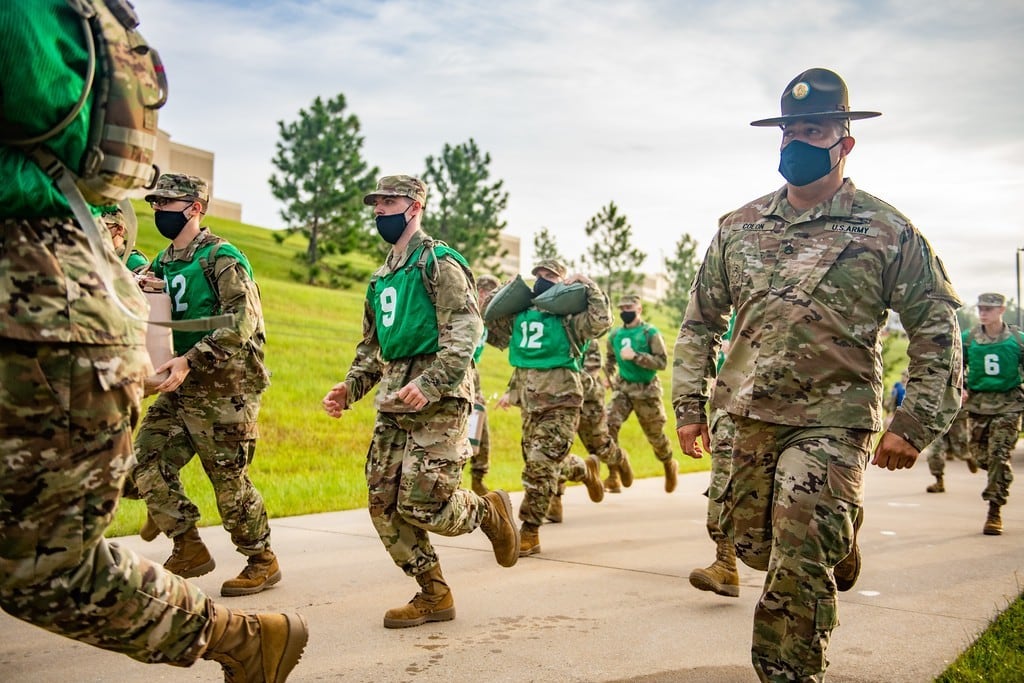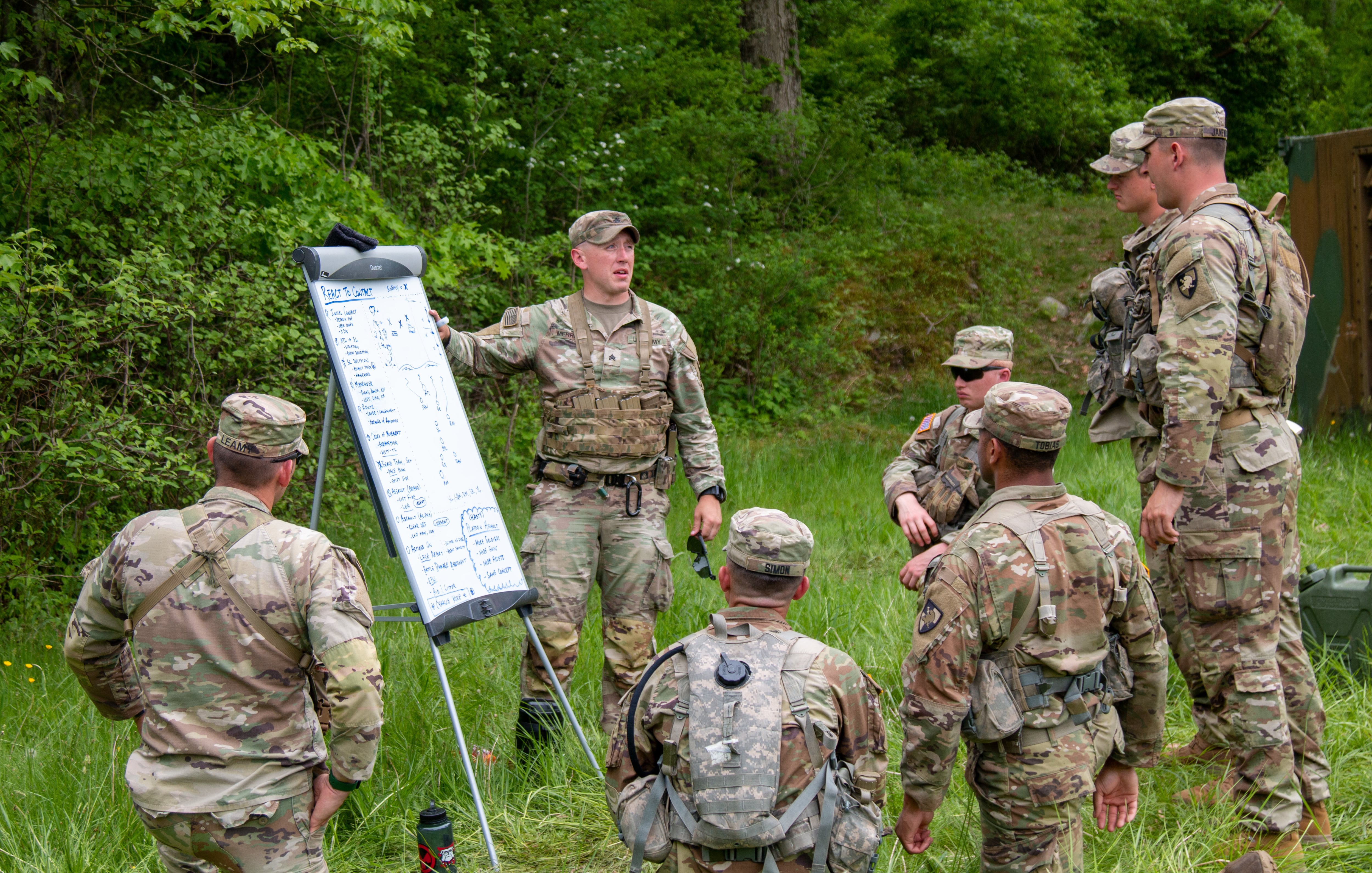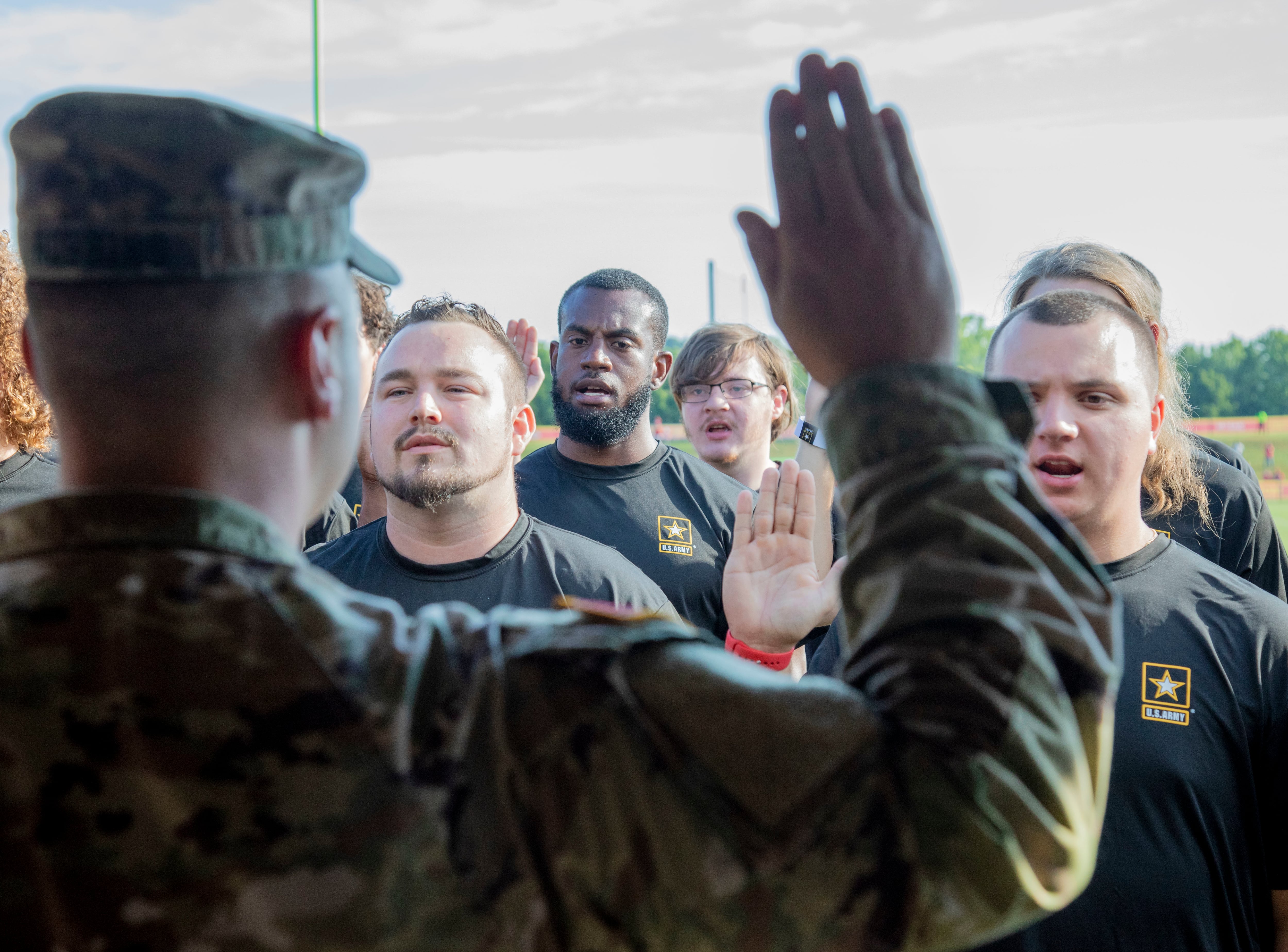There’s no sugarcoating it: all three components of the Army missed their required end strength for fiscal 2022, leaving boots unfilled after missing recruiting goals by around 15,000 trainees.
Senior leaders across the Army have gradually acknowledged the grim reality: the service is tens of thousands of troops short from where it was funded to be in fiscal 2022 — and the impact could soon be felt across the force.
Army Times spoke with senior officials and experts in the weeks preceding the Association of the U.S. Army’s annual conference to discuss the potential impact of the numbers shortfall and what’s being done to mitigate it.
In a phone interview with Army Times, Chief of Staff Gen. James McConville explained that the exact number of troops the Army ended September with isn’t yet finalized, but the service landed close to an estimate it provided to a panel of lawmakers in July.
“If we round...it’s 465,600,” the general said, “right around where we said [to Congress] we [were] going to land,” which was 466,000. The Army typically releases final end strength numbers in mid-to-late October to allow human resources officials time to track separations, medical retirements and other fluctuations in personnel.
The service also told lawmakers that the Army’s goal of having 473,000 troops at the end of fiscal 2023 likely isn’t doable either — the service is probably going to shrink to between 445,000 and 452,000 soldiers over the next twelve months.
The service’s top personnel officer, Lt. Gen. Douglas Stitt, told Army Times in an interview that human resources officials and Army senior leaders are aware that the “Army of 2023 looks a lot different than the Army of 2022 in terms of overall numbers,” but he declined to elaborate on his remarks.
Army Recruiting Command was unable to make a representative available for interview, with an official blaming a pending change of command for the incoming leader, Maj. Gen. Johnny Davis.
Davis will inherit one of the most challenging recruiting outlooks since the draft ended in 1973. How exactly the Army plans to deal with these unparalleled problems remains unstated. Officials have shied away from directly describing how they’ll mitigate the shortfall and fix accessions beyond a handful of headline initiatives that don’t yet have the capacity to meaningfully reduce the recruiting deficit.
Burning the candle from both ends
Meanwhile, the service is left trying to fulfill its increasing responsibilities with fewer troops.
Expert Katherine Kuzminski, who leads the Military, Veterans & Society team at the Center for a New American Security think tank, is worried the strain on the force could look “like [Obama-era budget] sequestration, where we’re asking a smaller number of people to still carry out the constant number of missions.”
But this time, the driver is a lack of willing recruits rather than a lack of funds.
“End strength is supposed to be tied to requirements,” explained Kuzminski. “And so the question becomes: if the end strength is reduced, are the requirements reduced?”

Unfortunately, the Army’s mission requirements appear to be increasing in spite of the empty boots.
Russia’s invasion of Ukraine in February sparked the rapid deployment of three extra brigade combat teams, a division headquarters and a corps headquarters to central and eastern Europe.
While that increased presence started to draw down in June when a tank brigade was sent home, the Defense Department announced that one of the additional brigades, when replaced, would transition to a new permanent rotational brigade requirement based in Romania. The additional “crisis-surge” troops — the division and corps headquarters, plus the second brigade — remain in theater, and the Pentagon has not indicated when the Army won’t need to fill that requirement.
McConville said the Army doesn’t think the shortfall will affect those and other operations “yet.”
“But we’re certainly concerned,” he added.
Kuzminski explained that the service has a few options for mitigating the personnel shortfall internally while maintaining its operational commitments.
Army Human Resources Command issues guidance annually on how full certain types of units should be, and when times are lean, deploying units and high-readiness units like the 82nd Airborne Division typically have priority for keeping their ranks full. Army officials reached for this story declined to reveal how the fiscal 2023 manning guidance will be affected by the end strength shortfall.
The Army’s top general, Gen. James McConville, suggested in July that the service could restructure its brigade combat teams to reduce personnel whose roles may be redundant. It’s not clear whether any such move has occurred.
Force structure expert and retired Marine Col. Mark Cancian of the Center for Strategic and International Studies told Army Times then that even modest restucturing of BCTs is unlikely to “amount to much,” unless the service takes the dramatic step of eliminating the third maneuver battalion that each brigade received as part of a 2013 restructuring.
Kuzminski said the Army can also fill in some gaps by increasing the number of individual reserve component troops on temporary active duty tours or leaning more heavily on mobilizations of entire reserve component units for such missions.
DoD officials are reportedly weighing making the Ukraine support mission a named operation, too, which could grease the bureaucratic wheels for the Pentagon to mobilize National Guard and Army Reserve units to fill troop requirements in Eastern Europe.
That could provide some help for the active duty force. But the Guard and Reserve have already been stretched thin over the past few years — or perhaps the past few decades — first by repeated deployments for the Global War on Terror and more recently by a massive surge in domestic response missions in the wake of the COVID-19 pandemic.
Reserve and Guard not exempt, either
Kuzminski noted that the Reserve and Guard are facing recruiting and end strength crises of their own that could diminish their ability to help the Regular Army fill its requirements. She is scheduled to speak at an AUSA panel on the Reserve’s capabilities.
The Army Reserve has not met its end-of-year strength goals since fiscal 2016, according to a review of budget documents by Army Times. They will miss again in fiscal 2022.
In the fiscal 2020 budget request produced in March 2019, Reserve officials blamed a “challenging recruiting and retention environment” for the component’s end strength shortcomings.
Foreshadowing the recruiting crisis that today afflicts their active duty peers, the March 2019 Reserve budget documents blamed a “number of external factors...to include a strong economy, low unemployment, only one in four 17-24 year olds eligible to serve, only one in eight with the propensity to enlist, and decreasing familiarity with military service.”
The situation hasn’t improved since.

National Guard Bureau officials recently admitted that they won’t meet their end strength goals either, blaming the COVID-19 vaccine mandate among other factors. Despite record-high utilization during the COVID-19 pandemic, the Guard managed to continue meeting its end strength goals amid the storm thanks to strong retention.
Now that’s changing.
“On the Army Guard, we’re about 6,000 short...of our authorized end strength of 336,000,” said National Guard Bureau Chief Gen. Daniel Hokanson at a Sept. 20 press conference.
Adding to the Guard’s manning troubles, approximately 9,000 troops have refused the COVID-19 vaccine in the Guard, too, and face discharge.
Hokanson suggested that the recruiting issues could be mitigated by increasing benefits for Guard personnel — such as by establishing no-cost healthcare for Guard troops even when in their part-time status.
Another option could involve bringing back successful, though controversial, recruiting referral bonus programs. Those programs helped buoy end strength numbers during the wars in Iraq and Afghanistan. But the programs were also the subject of a sweeping investigation into charges of mismanagement and fraud, some of which later inquiries found to be exaggerated.
Addressing the issue
Beyond the usual tools like increased bonuses and enticing contract options, experts highlighted other programs the Army has implemented in an effort to buoy its recruiting numbers.
The service’s Future Soldier Preparatory Course at Fort Jackson, South Carolina, is offering a pre-basic training course to prepare prospective soldiers who don’t meet body fat standards or whose test scores are too low. Army Times covered the prep course for its September print edition cover story.
Trainees must meet Army standards within 90 days after arrival to the course, or else they are sent home. Those who make the cut, are able to renegotiate their enlistment contracts and move on to basic combat training.
Kuzminski lauded the prep course as “the most innovative [initiative] of the services when it comes to addressing new recruits in that they’re not lowering standards...while also pursuing a way to get those who are interested [in enlisting] prepared to meet those standards.”

Dr. Beth Asch, a senior economist with the RAND think tank, said in a June interview that “there’s potentially some merit” to the prep course concept — with the caveat that the service needs to carefully gather and assess the pilot program’s data “from a research standpoint” before going all-in on the concept.
Tom Spoehr, a retired Army three-star who directs the conservative Heritage Foundation’s defense research, told Army Times in June he “love[s] the idea,” but wonders whether the prep course could be done in a more decentralized manner without trainees on the Army payroll. CNAS’ Kuzminski also thinks decentralized versions of the course run by National Guard units could be a way to expand capacity.
Kuzminski also believes the Army’s new “buddy” enlistment option, which guarantees up to four new recruits that they can join together, go through training together and then receive the same initial duty station, is more appealing to Gen Z prospects than selling the financial benefits of service.
“[The buddy options are] the kinds of things that I think actually matter to 18-year-olds,” she argued. “I think that’s another promising program, [but] it’s too soon to see what the data have to say about how effective they are.”
Stitt, the Army G-1, told Senate lawmakers on Sept. 21 that the fix will require more than just new programs and contract options, though.
The service currently has a recruiting and retention task force evaluating its accessions enterprise, explained Stitt. That task force is led by Maj. Gen. Deborah Kotulich.
“This group has been given the charter, quite simply, to look at our recruiting and retention enterprise and tear it down to the studs,” Stitt told a Senate panel, adding that the group will “see...what policies [and] procedures we need to look at” in order to reverse the end strength collapse.
It’s not clear yet how far the task force will go, but the service’s senior leaders recognize that drastic change is the only way to guarantee the service’s long-term viability.
“This is not a recruiter problem,” said Army Secretary Christine Wormuth and McConville in a co-signed memorandum published in July. “This is an Army problem.”
Davis Winkie covers the Army for Military Times. He studied history at Vanderbilt and UNC-Chapel Hill, and served five years in the Army Guard. His investigations earned the Society of Professional Journalists' 2023 Sunshine Award and consecutive Military Reporters and Editors honors, among others. Davis was also a 2022 Livingston Awards finalist.





